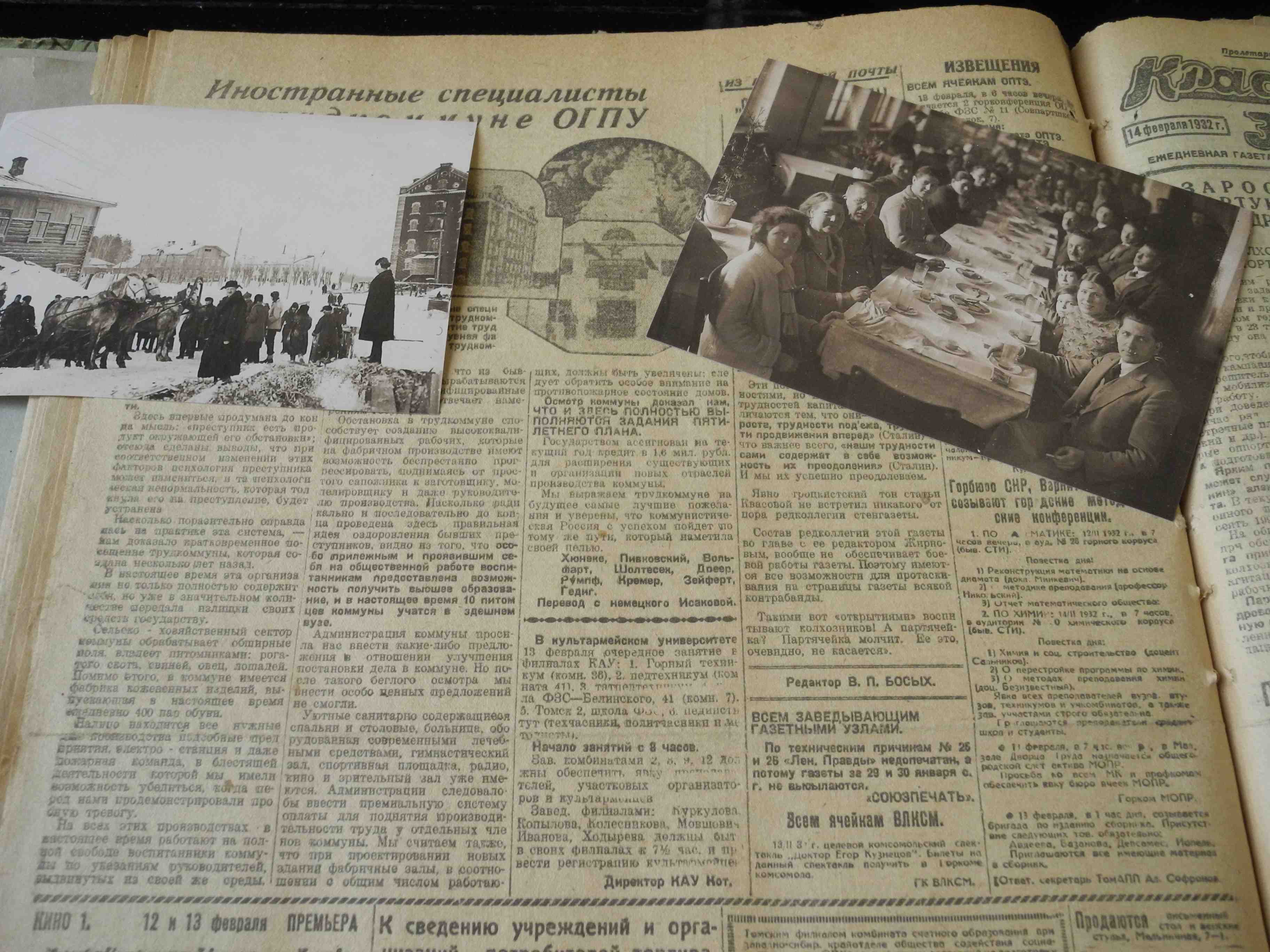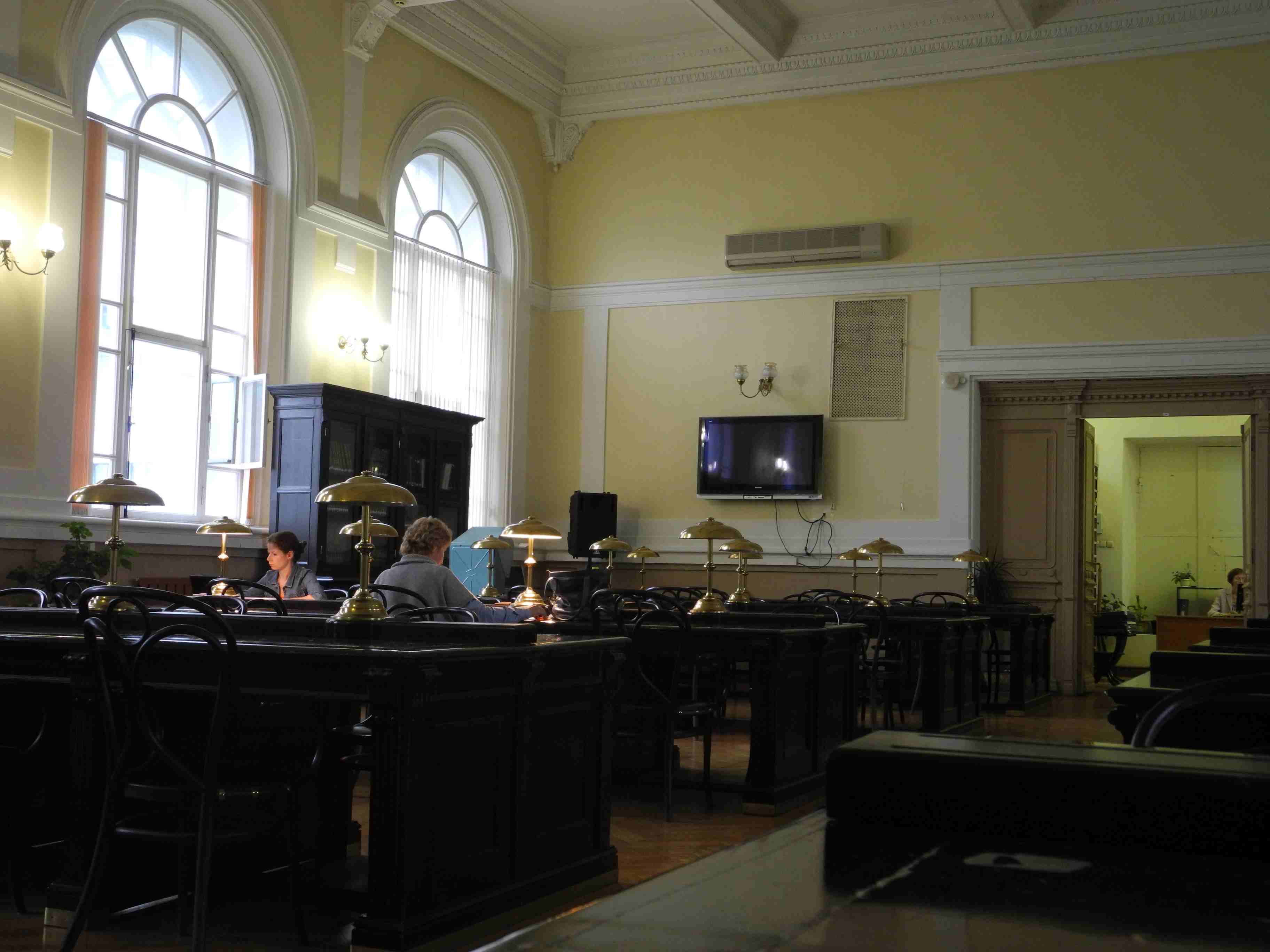09 | Tomsk 26.08.2014
Back in Tomsk
The Mystery of the Propaganda Article of 1932
On the Aeroflot flights from Berlin to Moscow and to Tomsk
I picked up the Moscow Times and the Russian magazine Ogonyok.
Both had articles pertinent to the two topics
i am currently researching - the 1930s and remembrance of WWII.
One article was about the current sanctions
imposed by the Russian government in retaliation to
the economic sanctions imposed on Russia by the EU.
Ogonyok discusses the topics around imports and
self-suffiency from various angles, pointing out that in the 1930s,
the country (then Soviet Union) had mounted a large-scale
campaign to produce everything herself, even without the help of
foreign specialists, who had been recruited to aid the country's
development previously. From my current research, however,
i know that the country still needed foreign specialists
and their machines at precisely that time in order to achieve
the Soviet Union's own industrialisation.
So my dusty old topic seems to be more relevant than i thought!

The Article in Krasnoe znamya with the photographs from The Album
Today i went back to the university library to have another look at
The Article that started me off on this project. I needed a better
photo of the text and wanted to compare the two photos from
The Album with those in the article.
The one showing the whole Cremer family among many other
people having tea and cake at a long dining table with white
table cloth and a samovar in what appears to be a canteen,
is one of the three photos featured in the centre of The Article.
The second photograph shows an industrial building,
half of which is on the right hand corner of the other Album
photo recording this excursion. I assume that the group photo in
the canteen was taken by a newspaper photographer
and that every family got a copy.

Professors' reading room at TSU library
I still do not know where exactly this "Labour commune" was,
but it certainly was no idealist happy workers cooperative.
It was an industrial unit consisting of works and residential
houses to enable greater productivity, staffed by non-voluntary
workers-residents, under the administration of the secret police
OGPU. I call it a "show-gulag", it was paraded for inspection
by foreign specialists and their families who allegedly wrote
this article praising the project.
In other words, the foreign specialists,
and this was the German engineers at Shakhtstroi,
were instrumentalised for propaganda purposes.
Within the official programme of looking after them, this was
probably an exercise in political education.
The Article, however, had the purpose of showing the readers
that the new government's policies were worthy of support.
Tomorrow i will ask at the NKVD Museum about the details
of this labour camp and maybe they can shed more light
on how the foreign specialists were dealt with
by the secret police!
Over the last two days I have checked Communist Party documents
of the early 1930s in the former Party Archive.
There were several Party meeting minutes, recommendations and
reports referring to Shakhtstroi.
The main points to note are that there were many perceived
problems at this institute regarding political
education and shock brigades, i.e. goals were not achieved.
The 25 foreign specialists (13 Americans, all but three
of who came with a firm, not stated which, and 12 Germans who
all came on individual contracts) did not take part in any political
activities, something that should be addressed, as was recommended.
But they perform essential and responsible work on large-scale projects.
In other words, they are indispensable in spite of various criticisms
Each specialist gets a short characterisation
in connection with his work.
I recognise the names of some of my grandfather's colleagues:
Mr. Breckenridge, the American engineer,
Herr Wagner, the one who got married in Tomsk.
I am disappointed not to find my grandfather in this list!
I suppose this is better than finding a negative
assessment of his work and work attitude. Even though i have
never met him, that would disappoint me.
Evidently the report was written before he started work there,
which means he started working there no earlier than late 1930.
Both Herr Wagner and Mr Breckenridge who i "know"
from photographs in The Album, are "good practitioners
with rich experience and can work well and independently".
There are three specialists who come up in other reports
because Herr Schultyssek, Brunner and Kuepper are not good workers.
They are "too lazy to work without significant pressure from above"
and cannot be trusted with any planning assignments.
I guess they were not able to extend their contracts.